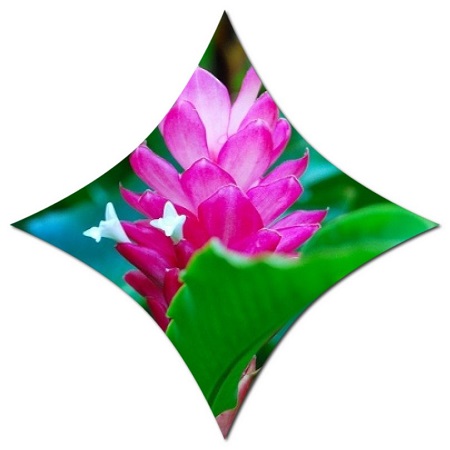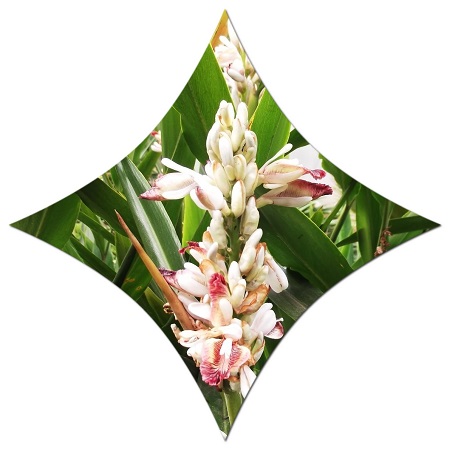Alpinia is a genus of flowering plants that belongs to the ginger family, Zingiberaceae. Some species within the Alpinia genus are commonly known as shell gingers or shell flowers. These plants are often cultivated for their attractive foliage and showy flowers. Alpinia species are typically tropical or subtropical plants, and their ability to grow in the United States depends on the specific climate and conditions of the region. In general, many Alpinia species are well-suited to warm, humid climates and may be grown outdoors in USDA hardiness zones 8-11. Zones 8-11 encompass regions with milder winter temperatures, such as parts of Florida, the Gulf Coast, and southern Texas, where the minimum winter temperatures do not fall below a certain threshold.
If you are interested in growing Alpinia in the United States, it’s important to consider the specific species and its cold tolerance, as well as the climate of your particular region. Some Alpinia species may be more cold-sensitive and may require protection or be grown as container plants that can be brought indoors during colder months in cooler climates.

Before planting, it’s always a good idea to check with local nurseries, gardening experts, or extension services to get specific recommendations for your area. Additionally, you can choose Alpinia species that are more suitable for your climate and follow proper care guidelines to ensure their successful growth.
Is Alpinia ginger toxic?
The Alpinia genus includes various species, some of which are commonly known as shell gingers or shell flowers. While these plants are generally not considered highly toxic to humans, there are a few considerations to keep in mind:
- Allergies: Some individuals may be sensitive or allergic to certain plants, including members of the Alpinia genus. Skin contact with the plant’s sap or leaves could potentially cause irritation or an allergic reaction in susceptible individuals.
- Ingestion: While Alpinia plants are not typically known for their high toxicity, it’s essential to exercise caution and prevent ingestion, especially by children or pets. Ingesting any plant material, even if not highly toxic, can lead to stomach upset or discomfort.
- Variability: Different species within the Alpinia genus may have varying levels of potential toxicity. It’s crucial to identify the specific species you have and research any known toxic components.
As with any plant, it’s advisable to take precautions, such as wearing gloves when handling them and keeping them out of reach of pets and small children. If there are concerns about the potential toxicity of a specific Alpinia species, consulting with local horticultural experts, poison control centers, or healthcare professionals is recommended.
Is Alpinia a sun or shade plant?
The sunlight preferences for Alpinia plants can vary depending on the specific species. In general, many Alpinia species prefer partial to full shade, and they often thrive in dappled sunlight or areas with filtered light. However, the ideal light conditions may also be influenced by the local climate.

Here are some general guidelines:
- Filtered Light: Alpinia plants typically do well in locations where they receive indirect or filtered sunlight. This can include areas with light shade or spots where they are protected from intense midday sun.
- Partial Shade: Many Alpinia species thrive in locations with partial shade, where they receive a few hours of direct sunlight in the morning or late afternoon, but are shaded during the hottest part of the day.
- Climate Considerations: In regions with hot and intense sunlight, Alpinia plants may benefit from more shade to protect them from scorching. In cooler climates, they might tolerate more sunlight.
- Soil Moisture: Alpinia plants often prefer consistently moist, well-draining soil. Adequate soil moisture is crucial for their health, especially in warmer climates.
Before planting an Alpinia species, it’s advisable to research the specific requirements of that particular species. Additionally, local gardening experts or nurseries can provide valuable insights based on the climate and conditions in your specific area. Observing the plant’s response to its environment will also help you determine whether it is receiving the right amount of sunlight and moisture.
What is the Alpinia plant used for?
Alpinia plants, particularly some species within the genus, have various uses, both ornamental and culinary. Here are some common purposes for which Alpinia plants are cultivated:
- Ornamental Purposes:
- Landscaping: Many Alpinia species are grown for their attractive foliage, vibrant flowers, and overall ornamental appeal. They are often used in gardens, landscapes, and tropical-themed settings to add beauty and visual interest.
- Culinary Uses:
- Edible Shoots and Rhizomes: Some Alpinia species, such as Alpinia galanga, are known for their edible shoots and rhizomes. Alpinia galanga, also known as Greater Galangal, is used in Southeast Asian cuisine and has a flavor similar to ginger. The rhizomes are used in various culinary applications, including soups, stews, and curries.
- Traditional Medicine:
- Medicinal Properties: In traditional medicine systems, certain Alpinia species are believed to have medicinal properties. For example, Alpinia officinarum, also known as lesser galangal, is used in traditional Chinese medicine for various purposes, including treating digestive issues.
- Aromatic Qualities:
- Fragrance Production: Some Alpinia species produce aromatic compounds, and their flowers or foliage may be used to extract essential oils or for other aromatic purposes.
- Insect Repellent:
- Natural Insect Repellent: The essential oils extracted from certain Alpinia species may have insect-repellent properties and are sometimes used in natural insect repellent formulations.
It’s important to note that the specific uses can vary among different Alpinia species. Before using any part of the plant for culinary or medicinal purposes, it’s crucial to verify the identity of the species and ensure it is safe for consumption or other applications. Additionally, consulting with local experts or herbalists can provide more information about the traditional uses and potential benefits of specific Alpinia plants.
